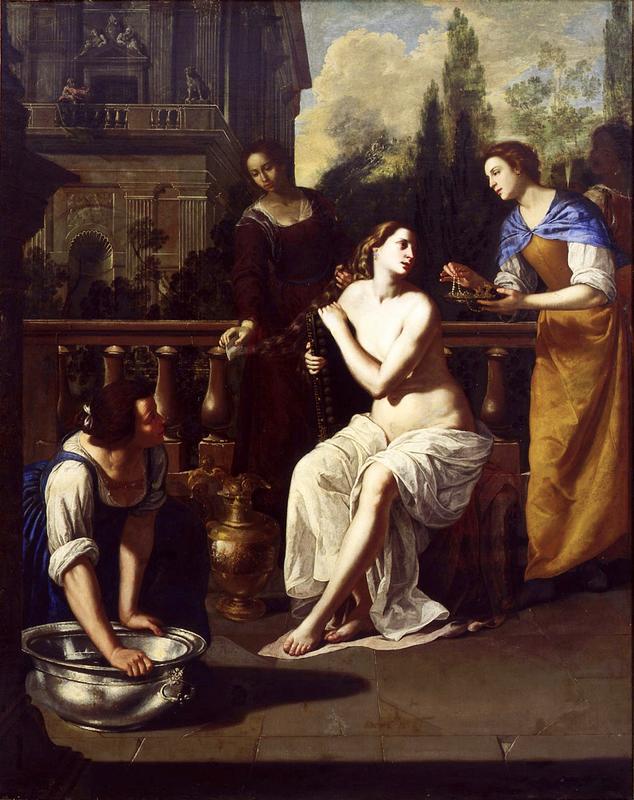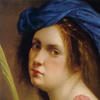More about Bathsheba
- All
- Info
- Shop

Contributor
An Old Testament tale of sexy time and treachery.
This painting encompasses some of Gentileschi’s favorite subjects. She loved to depict luscious and voluminous draperies, and luscious and voluminous female nudes. She also had a penchant for lady badasses throughout history, and painted women from the bible, famous historical characters like Cleopatra, and even feminized depictions of well-known allegories. She reworked this Bathsheba scene many times over, and turned it into at least four different finished paintings, making changes with each iteration.
This particular story all starts with basic hygiene. Bathsheba (a fitting name, although it technically means “daughter of the oath”) was outside with her maidservants taking a bath. In those days--approximately 950 BCE-- private washing was viewed by some as a safer alternative to still-popular-but-disease-ridden public bath houses. But the situation was not very private at all. Little did Bathsheba know, King David was creeping on her from high up in his nearby palace. (Can you spot him lurking in the shadows of Gentileschi’s painting?) He liked what he saw, so he had his people summon Bathsheba and bring her to his private quarters, where they did the deed.
It didn’t matter much to David that Bathsheba was already married to Uriah. But things got complicated when David received the news that Bathsheba had become pregnant from their encounter. So he hatched a rather diabolical plan to ensure that Uriah, a soldier, was killed in battle. This left the widowed Bathsheba eligible for David to marry, which he did. Their first son died as a baby, which David assumed was his punishment from God for being such a dirtbag. But Bathsheba later gave birth to a second son, Solomon. And that’s how it went down.
What did Bathsheba think about all this? The Bible doesn’t really emphasize her perspective except to say that she was kinda sad when Uriah died, so the early parts of her story are mostly about the men who surrounded her. This all sets the stage for Bathsheba Part Two, but that’s a story for another painting.
Sources
- “Artemisia Gentileschi, Bathsheba at Her Bath.” Sotheby’s. Accessed April 21, 2018. http://www.sothebys.com/en/auctions/ecatalogue/2014/old-master-british-…
- Berlin, Adele. "Bathsheba: Bible." Jewish Women: A Comprehensive Historical Encyclopedia. 1 March 2009. Jewish Women's Archive. Accessed March 2, 2018. https://jwa.org/encyclopedia/article/Bathsheba-bible
- Jastrow, Morris Jr., John Dyneley Prince, Marcus Jastrow, H. M. Speaker, Richard Gottheil, Duncan B. McDonald, George A. Barton. “Bath-sheba,” in The Jewish Encyclopedia, ed. Isadore Singer (Funk & Wagnalls: 1907). 594-596.
- Meyer, Mati. "Art: Representation of Biblical Women." Jewish Women: A Comprehensive Historical Encyclopedia. 20 March 2009. Jewish Women's Archive. Accessed March 2, 2018. https://jwa.org/encyclopedia/article/art-representation-of-biblical-wom…












